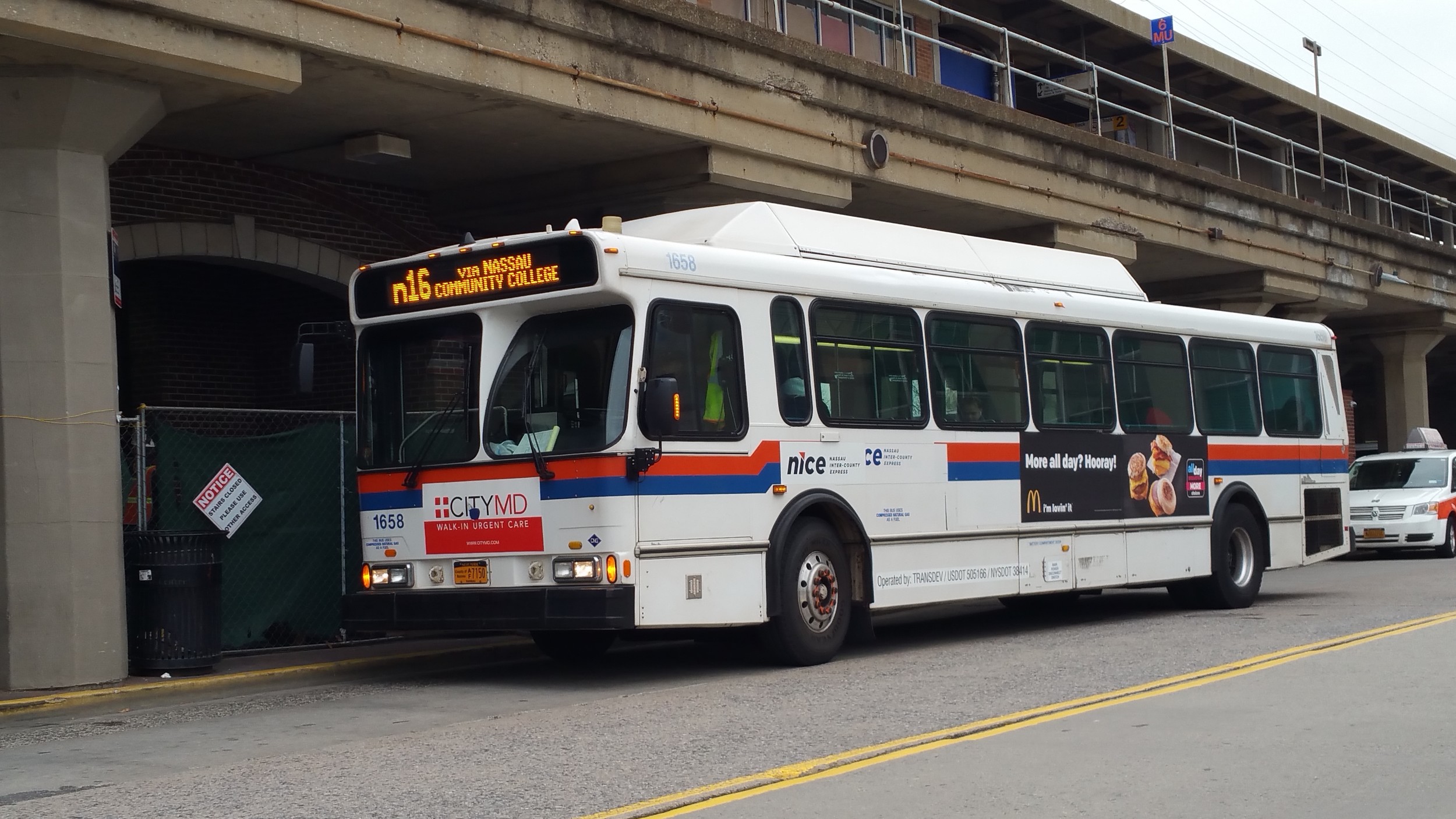Nassau bus lines slated for cuts
The Nassau Inter-County Express is short nearly $7 million of its total $130 million budget for 2017-2018, so at least 10 bus routes must be cut and service must be reduced on several others, unless lawmakers can find the money from other sources. The cuts would take effect in April and affect 5,400 riders, according to NICE officials.
Among those on the chopping block is the Rockville Centre shuttle from the Long Island Railroad train station to DeMott Avenue/Long Beach Road, which carries roughly 50 passengers a day, according to NICE spokesman Andy Kraus.
The shuttle to Mercy Medical Center, which was a proposed cut in December, is not affected.
“It breaks my heart to see those [routes] on the chopping block again,” said Nassau Legislator Laura Curran, a Democrat from Baldwin, who is running for county executive.
To help prevent the cuts, Democratic county legislators have also suggested using $6.8 million in undesignated county funding of $7 million available. Undesignated means that the funds haven’t been allocated to smaller, more specific programs at this time, such as county youth programs.
"Once again, Ed Mangano claims to be saving money, but he knows he's really just sticking Nassau taxpayers with the bill,” Curran said. “Residents rely on these bus lines to get to work, to school, to doctors appointments and to destinations across Nassau County. That's why I've identified both short-term and long-term funding sources to maintain this essential service.
“If Mangano actually cared about the well-being of all of our communities,” she continued, “he'd be making the most basic necessities of life easier — not eliminating them. Let's work together to restore these routes immediately and prevent any further damage.”
Amanda Laikin, a spokeswoman for the County Executive, responded in kind. “The County Executive’s proposed budget fully-funded the NICE Bus service,” she said. “However, the County Legislature amended the budget and replaced revenue. If that revenue comes to fruition or any other new revenue is generated, the County can restore routes. As a side note, we continue to seek additional funding from NYS for the system.”
NICE Chief Executive Michael Setzer wrote a letter on Jan. 30 to ask Nassau legislators to help find a way to close the gap in NICE’s 2017-2018 budget. NICE must find a way to fill the $6.8 million gap and balance its budget by Feb. 15.
“We are writing this letter to advise that the scale of these cuts will be significant, and you must be made aware of the effect this will have on many people,” wrote Setzer. “These eliminations and reductions will have consequences for many riders who rely on transit for access to jobs, college, health care, child care and more.”
NICE has based its route and service cuts on ridership data and how much aid the state provides to the bus company, according to Kraus.
“NICE is hoping that additional funds will become available prior to service reductions going into effect in April,” he said. “If that happens, it’s expected that some of the recommended service reductions will not take place.”
The cuts represent about 12.75 percent of NICE’s total service. The county recently reduced its subsidy, or planned contribution, from $6.8 million to $2.5 million. The subsidy is the minimum amount of financial assistance that the county can provide to keep its state transit aid. This year the county is under pressure from the Nassau Interim Finance Authority to cut costs and balance its budget without borrowing.
In response to Setzer’s letter, Nassau lawmakers on Jan. 30 urged the state to help them find a way to assist NICE, including earmarking a share of the Metropolitan Transportation Authority’s payroll mobility tax or implementing a 50-cent surcharge from the ride-share services Lyft or Uber whenever they are used in the county.
Until a final decision is made about route cuts and reductions, the bus service is working to find other ways to fix the deficit, officials said. Setzer also said in his letter that NICE was able to reduce it from an initial $12 million deficit to its current $6.8 million by closing facilities and laying off workers, and using another revenue source, the MTA’s recent MetroCard fare increase from $2.75 to $3 per single ride, of which NICE receives some benefit.
Public hearings took place last month to allow residents to voice their concerns about the cuts to NICE’s operations. At that hearing, residents such as John Michno, of Westbury, said he was upset that NICE officials did not appear to be considering riders or trying to maintain their loyalty with fare increases and inconsistent busing schedules.
“I guess I, too, will be relying on the train even more now,” Michno said at the hearing.

 47.0°,
Mostly Cloudy
47.0°,
Mostly Cloudy 




